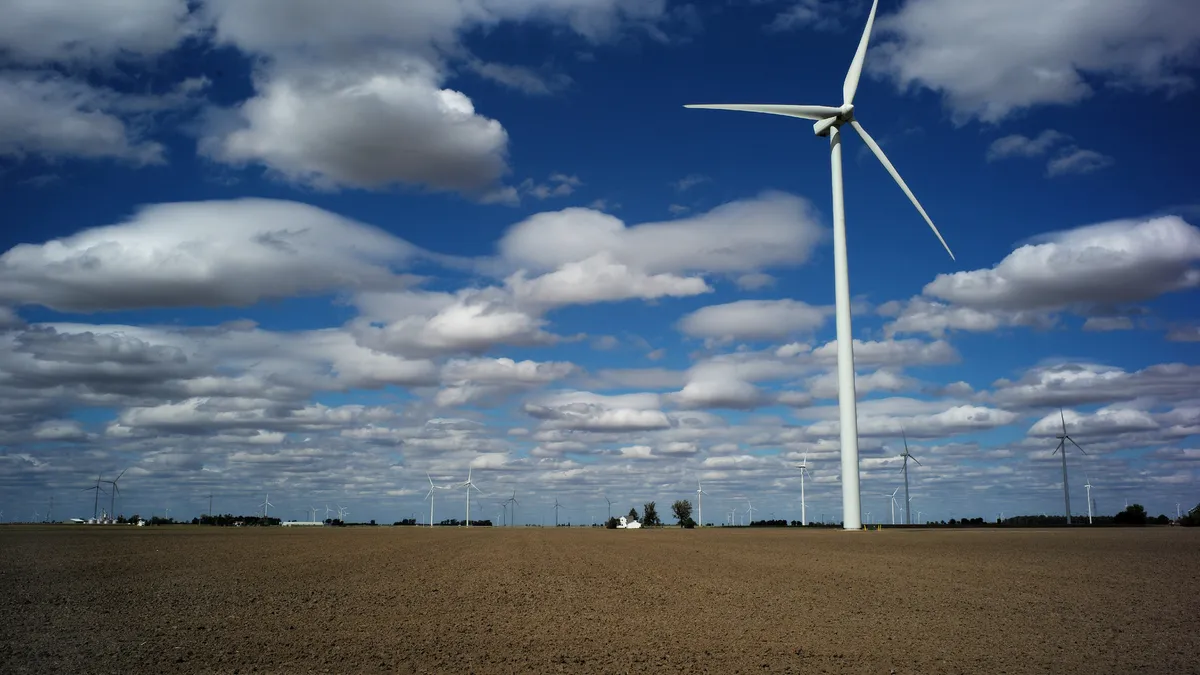Dive Brief:
- In the last five years, local governments have signed 335 deals to procure 8.28 gigawatts of renewable energy, according to data from the new Local Government Renewables Action Tracker. That figure is more than the total combined energy generation capacity of Alaska, Hawaii, Rhode Island and Vermont.
- The tracker, launched Wednesday by the American Cities Climate Challenge Renewables Accelerator, has two main components: a transaction map that shows all the renewable energy transactions executed by local governments from Jan. 1, 2015 to March 31, 2020; and an engagement map that details the efforts those local governments have made to influence policy and advance their renewable energy goals.
- As the price of renewable energy continues to drop compared to fossil fuels, and as cities set ambitious environmental goals, there will be continued growth and engagement with state regulators to simplify going green, Lacey Shaver, renewable energy manager at the World Resources Institute (WRI), told Smart Cities Dive. "I think we're really at a turning point in the last couple of years for cities figuring out what pathways they have to procure renewable electricity and are taking on as much as they can," Shaver said.
Dive Insight:
Cities continue to be motivated to take local action on renewable energy and climate change mitigation, despite the Trump administration's 2017 decision to withdraw the U.S. from the Paris climate agreement, Shaver said. Since then, the We Are Still In coalition and the American Cities Climate Challenge have formed to encourage cities and states to set local goals on curbing emissions and reducing reliance on fossil fuels, though some experts warn there is a long road ahead in that push for 100% renewable energy.
The localized approach has borne fruit with large renewable energy deals struck by individual cities. Late last year, Cincinnati released plans to build the largest municipal solar array in the U.S. to transition 30% of its power from fossil fuels. Then in February, Charlotte, NC signed a deal to buy 35 megawatts of power from a solar farm and help the city reach 24% of its goal to power municipal buildings with carbon-free energy by 2030.
Shaver said such deals are an encouraging trend as more cities near their climate goals. "It seems like every six months a city signs a larger deal than has ever been recorded," she said. Shaver pointed to the near-tripling of renewable energy capacity from 2017 to 2018, as it went from 750 megawatts to 2,200 megawatts, with an even bigger increase into 2019.
Meanwhile, cities are increasingly looking for ways to influence policy at the state level and encourage greater use of renewables by public utilities. That typically involves advocating before state boards and Public Utility Commissions, something that Shaver said used to be rare, but has grown in importance as cities start to flex their muscles as major energy consumers.
The advocacy efforts done by cities will result in more options added to their arsenal, especially as various programs take hold, said Stephen Abbott, Carbon-Free Cities and States Manager at Rocky Mountain Institute (RMI).
"At the broader level, we may see cities really engaging state legislatures to free up and create more opportunities outside that utility space, whether it be enabling or incentivizing rooftop solar for them and their communities or other forms of choice that would help them meet their goals," Abbott told Smart Cities Dive in an interview.
Shaver and Abbott said the tracker should serve as the perfect way for city leaders to learn from each other, especially as they look to replicate each other's investments.
"[One] of the questions we get asked all the time from local governments that we're working with is, 'Who else has done this? What did they do? I'm going to go to my mayor, I'm going to try to get buy-in for a similar project, it would be helpful if we knew what the next city over has done,'" Shaver said. "There wasn't a really good way to gather all that information in one place."















